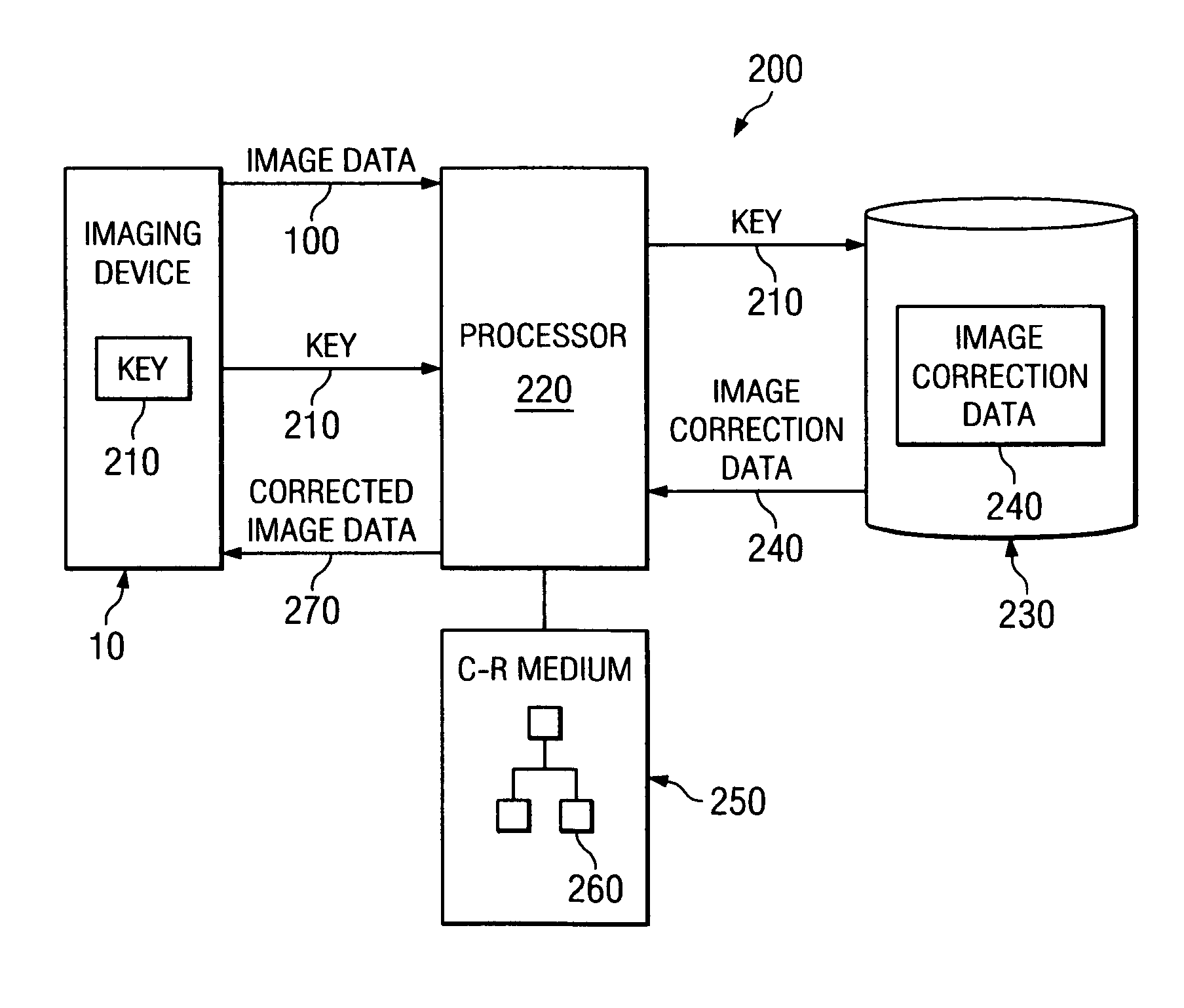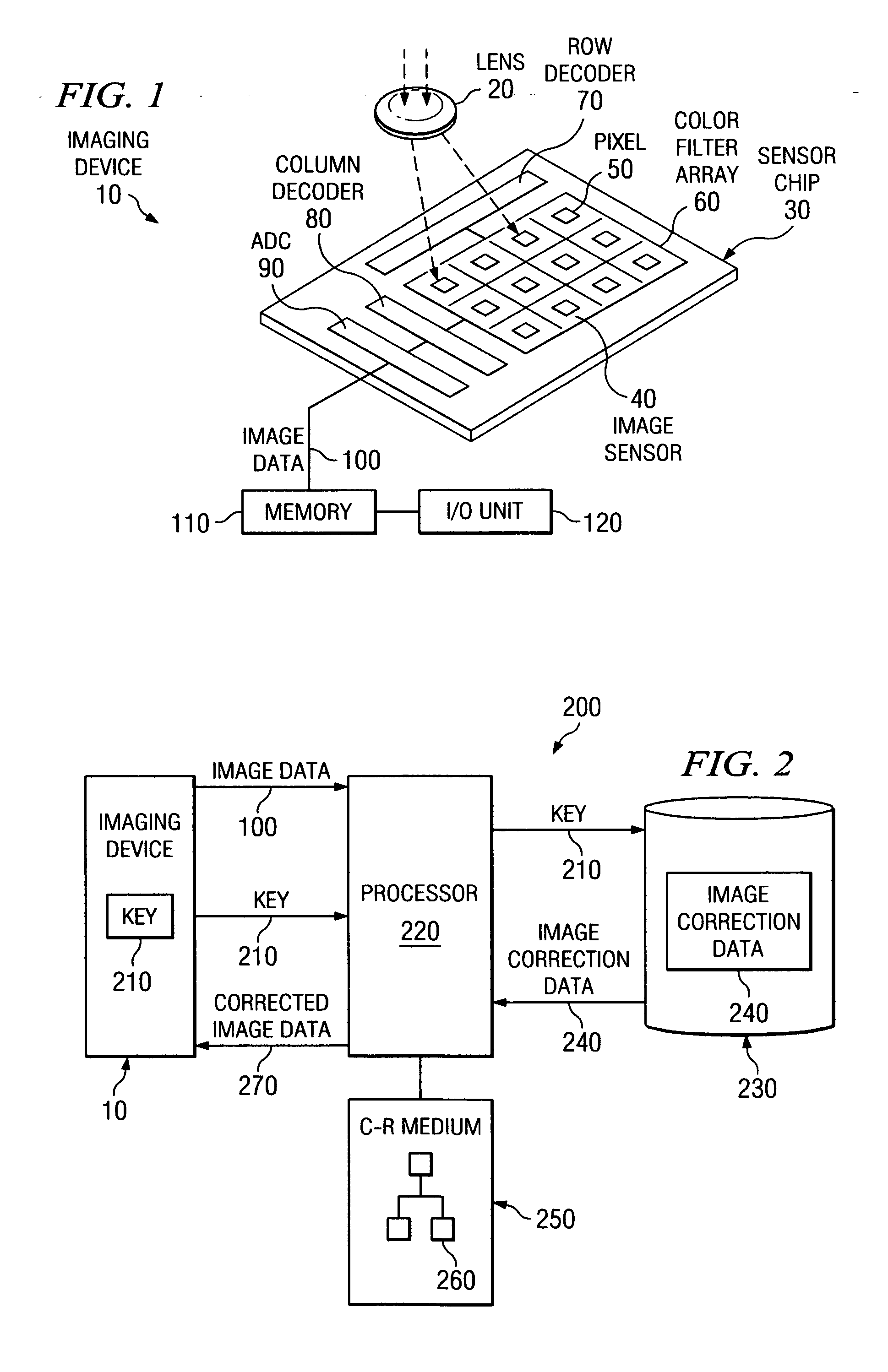System and method for processing images using centralized image correction data
a technology of image correction and image sensor, applied in the field of system and method for processing images using centralized image correction data, can solve the problems of photo-detectors accumulating charge, ccd and cmos image sensors often contain defects that produce undesirable noise in images, and significant noise sources, etc., and achieve cost-effective effects
- Summary
- Abstract
- Description
- Claims
- Application Information
AI Technical Summary
Benefits of technology
Problems solved by technology
Method used
Image
Examples
Embodiment Construction
[0017]FIG. 1 illustrates an exemplary imaging device 10 for use in capturing an image that can be corrected using centralized image correction data, in accordance with embodiments of the present invention. The imaging device 10 can be incorporated into any electronic device, such as a cell phone, PDA, digital camera, video camera, medical imaging device or other similar electronic device. In addition, the imaging device 10 is capable of connecting to a computing device, such as a processing device, a personal computer, server, web server, or other similar computing device, to access the centralized image correction data to correct the captured image.
[0018] The imaging device 10 includes a lens 20 and an image sensor chip 30, such as a CMOS sensor chip or a CCD sensor chip. The sensor chip 300 includes a digital image sensor 40 having an array of photo-detectors 50, each corresponding to a pixel of an image projected thereon. The digital image sensor 40 is covered by a color filter ...
PUM
 Login to View More
Login to View More Abstract
Description
Claims
Application Information
 Login to View More
Login to View More - R&D
- Intellectual Property
- Life Sciences
- Materials
- Tech Scout
- Unparalleled Data Quality
- Higher Quality Content
- 60% Fewer Hallucinations
Browse by: Latest US Patents, China's latest patents, Technical Efficacy Thesaurus, Application Domain, Technology Topic, Popular Technical Reports.
© 2025 PatSnap. All rights reserved.Legal|Privacy policy|Modern Slavery Act Transparency Statement|Sitemap|About US| Contact US: help@patsnap.com



